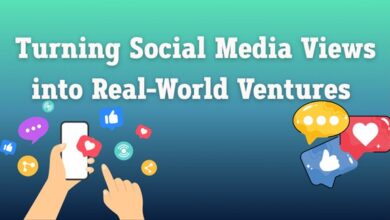The Art of the LinkedIn Cold Message: Turning First Contact into Lasting Business Relationships

A LinkedIn cold message is the first direct, unsolicited message you send to a professional you haven’t met, with the goal of starting a conversation. Let’s be honest: most people hate getting them. Why? Because they usually feel like the digital equivalent of a door-to-door salesperson interrupting your dinner – uninvited, impersonal, and instantly annoying. But it doesn’t have to be that way. The art of this first contact is about fundamentally shifting your mindset from “What can I get?” to “What can I give?”
Breaking through the noise doesn’t require a magic template; it requires a simple, human-first framework.
Step 1: Do Your Two Minutes of Homework
Before you even think about typing, spend at least two minutes on the person’s profile. I’m serious. Two minutes. Go beyond their job title and look for a “hook”. It should be a legitimate, human reason to reach out.
Did they recently post an interesting article? Did they comment on an industry leader’s post? Did their company just win an award? Do you have a meaningful mutual connection? This is about showing you’ve done the bare minimum to see them as a person. Your goal is to find one specific thing you can genuinely reference to make your message instantly lukewarm, not cold.
Step 2: Follow the “Personalize, Value, Question” Formula
Once you have your hook, you can structure your message. Forget long, rambling paragraphs. Keep it short, sharp, and focused entirely on them.
- Personalize: Start by referencing the hook you found. This immediately proves this isn’t a mass-blasted email and that you’ve actually paid attention.
- Bad: “Hi John, I see you’re a marketing director.”
- Good: “Hi John, I saw your recent post on the challenges of marketing attribution – your point about walled gardens really resonated.”
- Provide Value (Without a Catch): Offer something helpful with no strings attached. This could be a relevant article, a high-value industry report, or a thoughtful observation. The key is that it benefits them, not you.
- Bad: “I have a tool that can solve that for you. Can we schedule a demo?”
- Good: “Given your interest in that topic, I thought you might find this recent McKinsey report on the future of attribution insightful. The section on AI’s role is particularly interesting.”
- End with a Low-Friction Question: Your call-to-action should not be a huge ask like “Can I have 30 minutes of your time?” Your only goal is to start a conversation. Ask a simple, open-ended question that’s easy for them to answer.
- Bad: “Are you free for a call next Tuesday?”
- Good: “Curious, has your team started experimenting with any of the AI-driven models mentioned?”
Putting It All Together
Let’s look at the stark difference.
The Spammy Template:
“Hi Sarah, I see you’re the VP of Sales at Acme Inc. My company, SalesCorp, helps leaders like you increase revenue by 30% with our revolutionary CRM. Are you free for a 15-minute demo next week?”
The Human-First Approach:
“Hi Sarah, congrats on the recent article about Acme’s expansion into the European market—that’s a huge move. Given the focus on scaling your sales team, I thought you might find this case study on how [Non-Competing Company] handled international sales training useful. Curious, what’s been the biggest surprise about navigating the new market so far?”
See the difference? The first is a self-serving ad. The second is a peer-to-peer conversation starter that shows you’ve paid attention, offers value, and asks a thoughtful question. One gets deleted, the other gets a reply. That’s the art.


